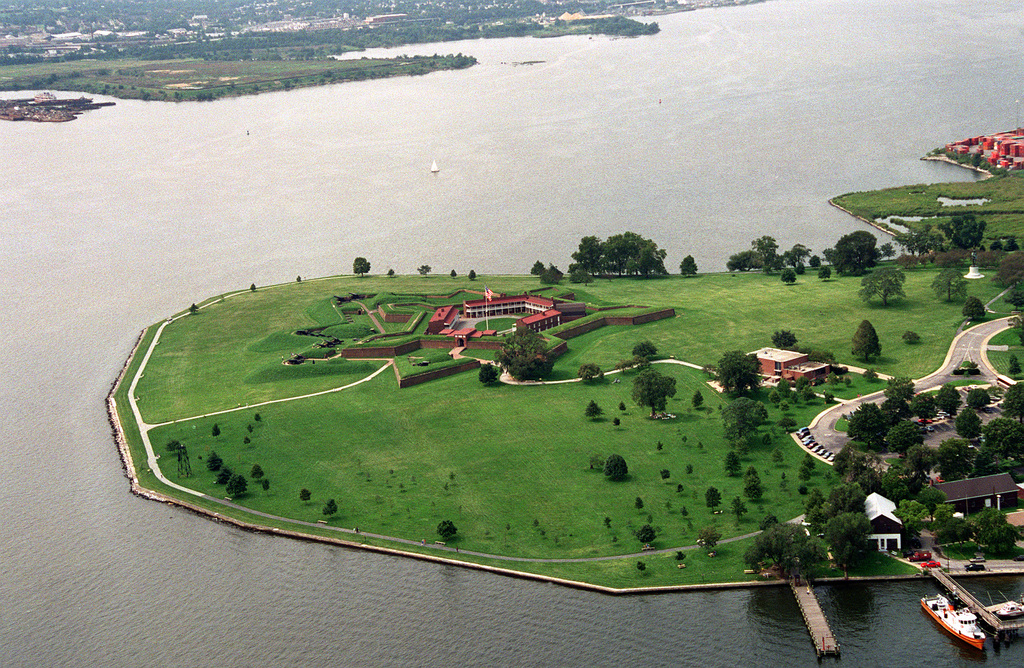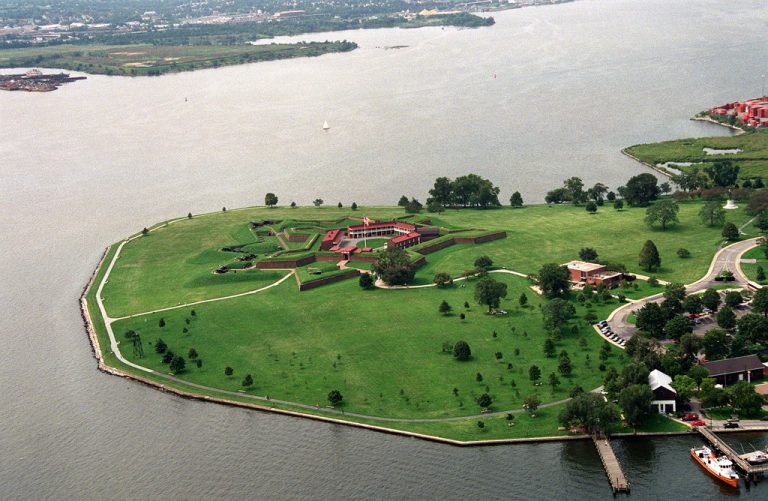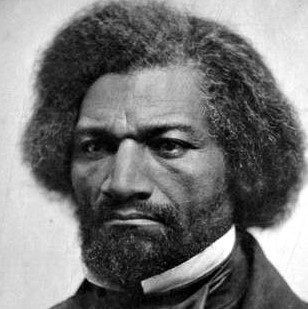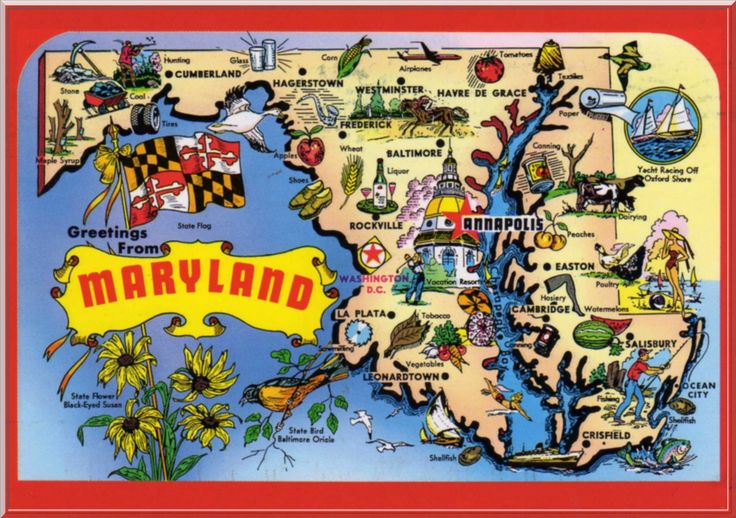If history had a playground, Maryland would be the jungle gym. Nestled between the North and the South, threaded with waterways, and constantly at the intersection of big national events, the Old Line State is practically bursting with stories. From fierce battles that shaped the nation to quiet towns that quietly preserved democracy, Maryland is a must-visit for anyone who wants more out of travel than just pretty selfies—though don’t worry, you’ll get those too. We’re diving into 10 must-see historic sites in Maryland, ranging from Civil War battlefields to colonial towns, and even a haunted prison camp (because nothing spices up history like a good ghost tale). Buckle up, because this road trip is one part time machine, one part adventure, and entirely unforgettable.

1. Fort McHenry National Monument and Historic Shrine – Baltimore
Why It’s Historic
During the War of 1812, the British navy unleashed a 25-hour bombardment on Fort McHenry in September of 1814. Against the odds, the fort held. Watching the attack from Baltimore Harbor, lawyer Francis Scott Key was so moved by the sight of the American flag still flying at dawn that he scribbled down the words that would eventually become the U.S. national anthem.
What to See
- The Star-Shaped Fort: Walk the ramparts and picture cannon fire lighting up the sky.
- Exhibits: Artifacts, uniforms, and tales of the soldiers who stood their ground.
- Flag Ceremony: Park rangers lead daily flag-raising events—yes, you can help hoist the 15-star flag. Trust me: chills guaranteed.
Travel Tip
Save time for the harbor—it’s not all history; Baltimore’s waterfront is buzzing with seafood restaurants and lively culture.
2. Antietam National Battlefield – Sharpsburg
Why It’s Historic
September 17, 1862. The single bloodiest day in U.S. military history. Confederate General Robert E. Lee’s first invasion into the North was stopped cold by Union forces under General George McClellan. More than 23,000 were killed, wounded, or missing. Though tactically a draw, the Union’s stand gave President Lincoln the confidence to issue the Emancipation Proclamation.
What to See
- Bloody Lane: The Sunken Road where intense fighting took place—it looks deceptively peaceful now.
- Burnside Bridge: The site of ferocious combat, today it’s an iconic photo spot surrounded by rolling countryside.
- Visitor Center: Outstanding films and ranger-led discussions bring the strategy (and sacrifice) to life.
Travel Tip
Plan two to three hours minimum. The self-driving tour is excellent, and many stop to picnic by the Antietam Creek.
3. Maryland State House – Annapolis
Why It’s Historic
Step into the only U.S. state capitol to also double as the U.S. Capitol—briefly, in 1783–1784. It’s where General George Washington resigned as commander of the Continental Army, willingly handing back power (a jaw-dropping precedent in world history). Congress also ratified the Treaty of Paris here, officially ending the American Revolution.
What to See
- The Rotunda: Look up at that stunning wooden dome—the largest of its kind in the U.S.
- Historic Legislators’ Chamber: Washington’s resignation took place here, and the space has been carefully preserved.
- Statues & Artwork: Key figures from Maryland’s colonial and revolutionary history.
Travel Tip
You’re in Annapolis—after your historic fill, stroll cobblestone streets, admire 18th-century architecture, and finish with a plate of crab cakes by the harbor.
4. Monocacy National Battlefield – Frederick
Why It’s Historic
Often called “the battle that saved Washington,” this 1864 clash saw Confederate General Jubal Early’s troops try to march on the Union capital. Though the Confederates technically won the battlefield, Union forces delayed them long enough to bolster Washington, D.C.’s defenses. Without Monocacy, the map might’ve looked very different.
What to See
- Interpretive Trails: Hike across fields that saw heavy fighting.
- Worthington Farm & Thomas Farm: Historic buildings still standing from the battle.
- Visitor Center Exhibits: Clear, compelling explanations of how a “loss” became a strategic victory.
Travel Tip
Frederick itself is a charming town brimming with boutique shops, art galleries, and stellar food. Make it a day trip.
5. Harriet Tubman Underground Railroad National Historical Park – Dorchester County
Why It’s Historic
Few figures embody Maryland’s legacy like Harriet Tubman. Born into slavery on the Eastern Shore, Tubman escaped and returned nearly 13 times to guide enslaved people to freedom along the Underground Railroad. Her courage, resilience, and leadership remain an inspiration worldwide.
What to See
- Visitor Center: Multimedia exhibits bring her story to vivid life.
- Harriet Tubman Byway: Drive the 125-mile scenic route to follow her footsteps.
- Marsh Trails: The surrounding Blackwater National Wildlife Refuge isn’t just scenic—it’s the same landscape Tubman navigated at night.
Travel Tip
Bring binoculars. The refuge is a bird-lover’s paradise, and spotting a bald eagle soaring overhead feels like poetic justice.
6. Chesapeake and Ohio Canal National Historical Park – Potomac River Valley
Why It’s Historic
Spanning nearly 185 miles from Washington, D.C. to Cumberland, Maryland, the C&O Canal was a 19th-century engineering marvel. For decades, mules towed boats full of coal, lumber, and grain through the canal. Today, it’s a recreational paradise sprinkled with historic lockhouses.
What to See
- Great Falls Tavern Visitor Center: Stunning views of waterfalls and preserved canal history.
- Historic Lockhouses: Some can even be rented overnight for the full canal-era vibe.
- Towpath Trail: Perfect for biking, hiking, or running.
Travel Tip
Pack snacks and water—you’ll get lost (happily) in hours of riverside strolling.
7. Historic St. Mary’s City – St. Mary’s County
Why It’s Historic
Maryland’s first colony (founded in 1634) and its first capital. St. Mary’s was also notable for religious tolerance—a rarity in the 1600s. Over 800 acres are preserved today, making it one of the nation’s most impressive outdoor living history museums.
What to See
- Archaeological Sites: Many structures have been uncovered right before your eyes.
- Reconstructed Village: Costumed interpreters bring colonial times alive—blacksmiths, farmers, priests, and all.
- Tall Ship Maryland Dove: Climb aboard a replica vessel like the ones that sailed the Chesapeake.
Travel Tip
This is an immersive, family-friendly experience. Give yourself half a day—kids especially love the interactive demos.
8. Point Lookout State Park – St. Mary’s County
Why It’s Historic
It started as a resort at the mouth of the Potomac River, but during the Civil War it was converted into one of the largest prisoner-of-war camps for Confederate soldiers. At its peak, up to 20,000 POWs were housed here under harsh conditions.
What to See
- Civil War Museum & Marshland Nature Center: Part battlefield, part natural preserve.
- Prisoner Camp Site: Trace markers where the camp once stood.
- Lighthouse: Perched at the tip of the peninsula—Instagram-worthy backdrop.
Travel Tip
Point Lookout is infamous for ghost stories. Whether you’re a believer or not, it adds a dramatic twist to your visit.
9. Thomas Stone National Historic Site – Port Tobacco
Why It’s Historic
Not every Founding Father gets Broadway musicals written about them—but Thomas Stone deserves love too. A Maryland lawyer and planter, Stone was a signer of the Declaration of Independence. His preserved estate offers a quieter, more personal look at Revolutionary-era life.
What to See
- Haberdeventure Plantation House: Restored, with furnished rooms reflecting the 18th century.
- Walking Trails: Take in scenic views around the estate.
- Historic Interpretation: Learn how one man’s decisions helped tilt America toward independence.
Travel Tip
It’s less crowded than many historic sites, making it a serene stop for reflection.
10. B&O Railroad Museum – Baltimore
Why It’s Historic
All aboard for the birthplace of American railroading. The Baltimore and Ohio Railroad began in Maryland in 1827, pioneering modern transportation. Freight, commerce, and even Civil War troop movements were revolutionized by these iron tracks.
What to See
- Roundhouse Collection: One of the finest railroad collections in the world.
- Interactive Exhibits: Climb into railcars, test your inner engineer, and connect with America’s industrial era.
- Train Rides: Yes, you can actually take a ride on vintage lines.
Travel Tip
Kids adore this place. But let’s be honest—so do adults who never grew out of train fascination.
Wrapping Up the Road Trip
If walls could talk, Maryland’s would be spilling stories of revolutionaries, generals, enslaved people daring for freedom, and leaders shaping a brand-new nation. Each of these best historic places in Maryland connects the dots between the past and today.
Civil War buffs will find plenty of Civil War sites in Maryland to satisfy their curiosity, from Antietam’s sprawling fields to Monocacy’s overlooked brilliance. But Maryland isn’t just about battlefield glory—its history reminds us of freedom, resilience, and the power of ordinary people.
So pack the car, grab your comfortable shoes, and maybe keep a notebook handy. Maryland’s past is ready to walk with you—and maybe, just maybe, you’ll leave with a little extra wisdom tucked between bites of crab cake.





